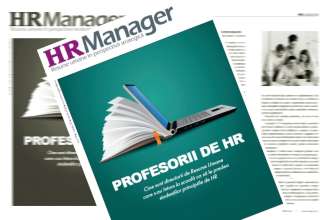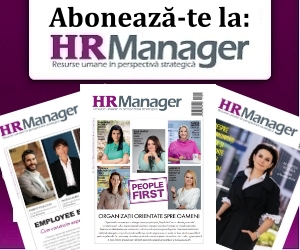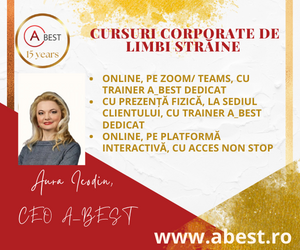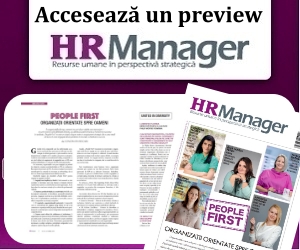
by Helga Pattart-Drexler
Head of the Executive Education, WU Executive Academy | Vienna University of Economics and Business (WU), Vienna, Austria
You certainly know it: when you are in a state of flow, you find it easy to square things away. You are focused, in a good mood, full of energy and so absorbed in your work that you forget about the world around you. But how can we achieve flow? And what are the biggest flow killers that prevent us from getting into this state?
According to well-known Hungarian- American psychologist Mihaly Csikszentmihalyi, environments of a certain kind make people achieve flow state—i.e. a state of joyful productiveness— regardless of gender, age or cultural background. However, in everyday business, they are given too little room. Many companies want innovation and creativity, both of which can emerge only in flow state. Unfortunately, pressure, routine, red tape and hierarchical structures all too often put an end to flow.
There are nine ”flow killers” that executives unfortunately use again and again.
Your goals are not clear
The project’s objective is clear; how to achieve it is anything but clear. This can block flow or prevent it from developing in the first place. In his book “Creativity: Flow and the Psychology of Discovery and Invention”, Mihaly Csikszentmihalyi recommends concretizing every single step. In flow state, we always know what needs to be done next. Incidentally, brain researchers say that problem-solving is a task perfectly suited for the human brain. It is fun and stimulates us to think creatively.
You believe in racking one’s brain rather than in relaxing
We have all been there! You never find the solution to a problem while you are at your desk racking your brain, but only once you relax: in the course of jogging, while taking a shower, before falling asleep. Your thoughts can flow freely and do not get blocked by pressure or anxiety.
You prefer to stay in your comfort zone
Flow can be found where new things are emerging—and this rarely happens in your comfort zone. If we want to come up with brand new ideas, we need to leave time-tested approaches and routines behind and break new ground. The desire to discover something new makes it easier for us to achieve flow. Conversely, flow is a sine qua non for the emergence of the new.
You are fond of employee roulette
Getting into flow state as an individual in the course of your work is one thing. But at the team level, collaboration should also be as smooth as possible. Alas, employee roulette is a popular game in many places. People get employed where they are currently needed—irrespective of the fact that their strengths and interests may lie elsewhere. If, as an executive, you assign projects and tasks in accordance with the competences and interests of employees, you will unlock plenty of innovative energy. In order to be able to do this, you have to develop a good understanding of people’s personal characteristics, motivations and needs!
Mihaly Csikszentmihalyi says that, with regard to flow, it is absolutely necessary for tasks and skills to be in perfect harmony. Being in flow state is synonymous with walking the fine line between anxiety and boredom. We consider the task to be challenging, exciting but doable. One thing is clear: the best way to achieve team flow is to give people a say when it comes to organizing work processes and distributing tasks.
You give destructive feedback
When you leave employees in the dark about whether they have done a good job or where there is room for improvement, but instead direct sweeping criticism and personal reproaches at them, flow and motivation will soon be gone. Giving negative, destructive feedback or none at all is a sure way to kill flow. Flow cannot be achieved unless we receive feedback on our actions that is swift, specific and results-oriented—and given to us in an appreciative manner.
You foster a climate of envy and condescension
Correcting others, demonstrating to them that one could have done a better job and criticizing their mistakes while belittling or selling short their achievements: this kind of behavior kills collaborative flow on a long-term basis. But executives should be role models and foster a climate where there is no room for envy and condescension. In my team, we celebrate the small mistakes as well as the big achievements. We are happy for one another and grateful for the opportunity to learn from mistakes together. Understanding one another and learning from each other motivates people and is conducive to flow.
You beat around the bush
Where a team does not work smoothly, there is, more often than not, a lack of open communication. Environments in which openness and constructive criticism are ill-tolerated give rise to grapevine communication and subliminal sabotage as a result of misunderstandings or false expectations. When working in teams, we need to openly discuss all concerns, misunderstandings and expectations with regard to a specific task or project. Otherwise, we cannot come up with new ideas and approaches. Every opinion matters. Through free association we achieve flow. And in order to be able to associate freely, we must be allowed to openly say what we think.
Your focus is elsewhere
It has happened to us all. You are busy squaring away the tasks on your to-do list, e-mails keep popping up on your computer screen, the boss approaches you with a request and your coworker is loudly talking away on the phone. At first, you feel distracted, but soon you become frustrated. In order to achieve flow, one thing is crucial: being absolutely concentrated and focused on the one task that is in front of you at this moment. Executives, too, have to see to it that the right working conditions for this to happen are in place.
You ignore the power of flow
When it comes to making teams and for the entire organization to achieve flow, executives need to turn their attention to what is known as “organizational flow”, as management consultant Gustav Greve points out in his book of the same name. Executives are the ones to create an environment conductive to flow. And they have to start with themselves and their “flow competence”.
ABOUT THE AUTHOR
 Helga Pattart-Drexler is Head of Executive Education at WU Executive Academy and designs various executive education programs for international companies and industries with her team. Recently, one of her key focuses is online learning and supporting companies in their efforts to go digital/digital leadership. She studied Adult Education and has a broad range of experience in the field of education, personnel and organizational development as well as coaching.
Helga Pattart-Drexler is Head of Executive Education at WU Executive Academy and designs various executive education programs for international companies and industries with her team. Recently, one of her key focuses is online learning and supporting companies in their efforts to go digital/digital leadership. She studied Adult Education and has a broad range of experience in the field of education, personnel and organizational development as well as coaching.




















